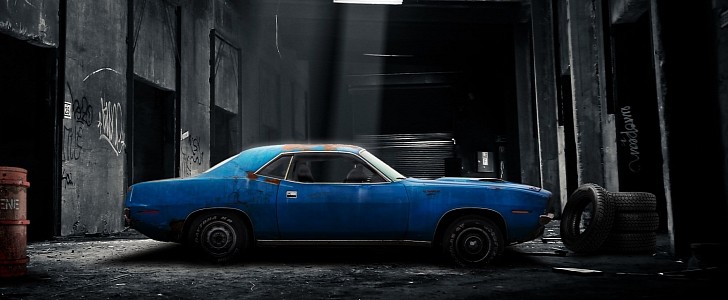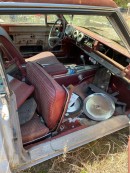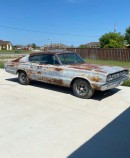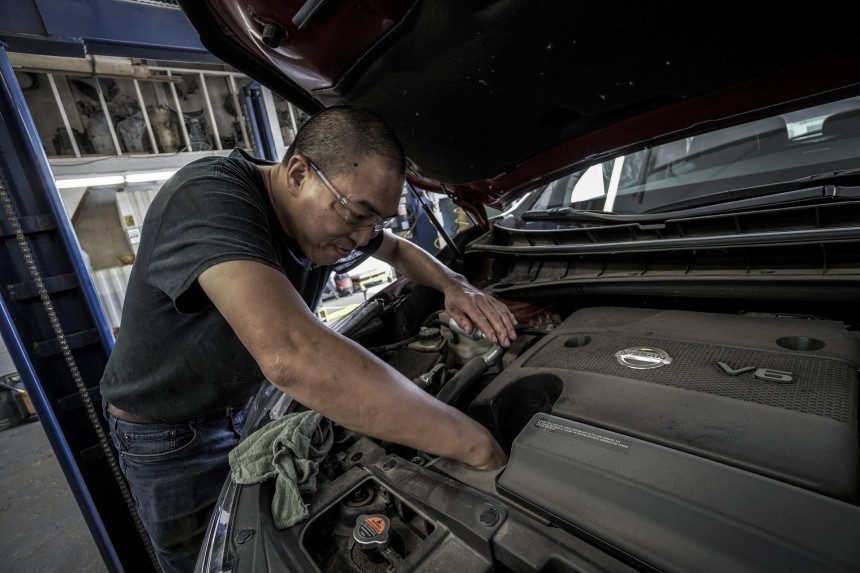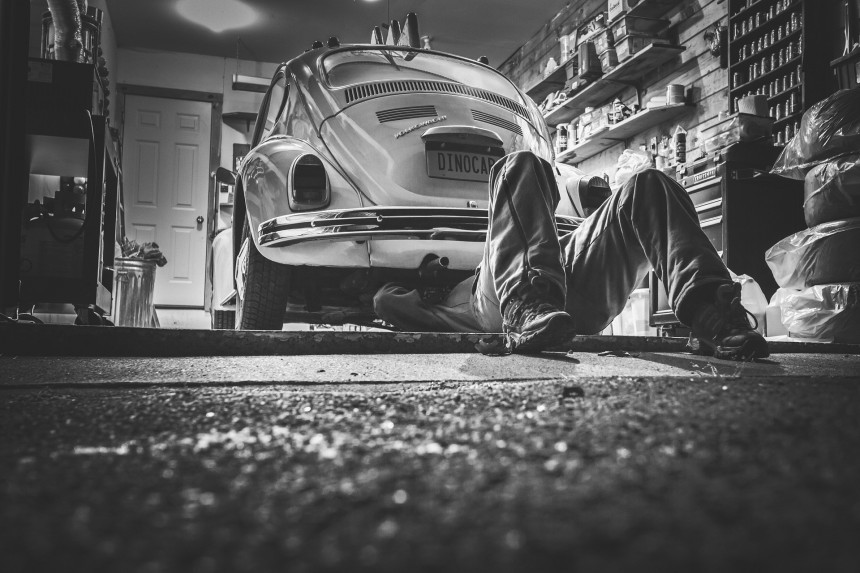For some people, restoring a barn-find is a very easy task: pick up the phone, call the local shop, and they will do the rest. But for a true car enthusiast, discovering the bits and pieces of their relic is true moment of joy.
We covered in a few past articles how to get an abandoned car and register it in your name. But those steps were just the tip of the iceberg. Sometimes, you are not that lucky to get a true time capsule ready to drive after a couple of hours. Most of the time, these relics are in terrible shape, and the restoration process could take years, even if you are a big carmaker with virtually unlimited resources.
Most petrolhead will try to discover their new acquisition in peace and make a list with the work they need to do on the car. First of all, maybe they should have a tetanus shot since scratches with rusty old metal usually occurs. Then, depending on where the car sat for decades, it might have colonies of rats, spiders, or other creatures that could bite, sting, or make you scratch. Removing the vehicle from its former place on a trailer won’t scare all of them off, and it might be a good idea to use smoke and pest repellants.
The next step should be a proper wash. Start with a broom and end by washing with water. It won’t make it start, but at least you’ll have a chance to see the car’s color. Next, inspect the interior and remove the carpets. Please pay attention to seats and doors since they are appealing to mice and bees. If the car sat in a desert, a scorpion inside wouldn’t be such a surprise.
Move on and try and see if the engine turns and do that slowly, by hand, either by rotating the fan belt or with a spanner directly from the crankshaft. You might want to remove the spark plugs to ease things up. For an inline-four, maybe it won’t make such a big difference, but for a hefty V8, it really matters. Hopefully, you’ll be able to turn it. If not, pour some oil inside the cylinders through the spark-plugs holes and give it another try after 20 minutes or so.
By now, the engine should be able to turn by hand. While some relics started after decades with only a fresh battery, others needed some TLC before. First, cover the ground bases: change the spark plugs and leads, check the distributor cap for cracks, drain and refill the radiator with fresh fluids. Also, change the oil. Don’t get an expensive one. It will soon be replaced. It might be a good idea to drain the tank from any vintage gasoline that might still be there and pour a gallon of a fresh one.
Here is a trap you’ll want to avoid: the new types of gasoline contain ethanol, which is very bad for old engines and especially for carburetors since that chemical dissolves certain types of seals that are petrol-resistant. Try to find some ethanol-free gasoline from other petrolheads around you.
Next, disconnect the ignition coil and keep the new spark-plugs out to ease the starter-motor job. Check the fuel lines for leaks. If everything is dry, plug in a fresh battery and then crank the engine a few times for a few seconds. Usually, five cranks of ten seconds should be enough. Thus, the oil will circulate inside the engine and start to lubricate the old rods and pistons. Only after that, put the plugs in their place, install the new leads, and you are ready for the first heartbeat.
Just be sure to have someone with a fire extinguisher around. I lost a Ford because the only extinguisher I had was too old. Everything under the hood burned, and the carburetor exploded. Luckily, only my feelings suffered, and no one was injured.
Even if the engine runs smoothly, don’t drive the car since its brakes and tires are most probably useless. An engine that starts is great news, but don’t pop the champagne yet.
The next step would be to inspect the car’s frame. The floors are less important, but if the frame is bent, rusted, or broken, that’s a sign of huge trouble. If it looks solid, you can shoot that corkscrew from the sparkling wine through the air, splashing bubbles around like a champion on the podium.
Now you can try to move the car a little bit, but with those old tires and brakes, you might do a lot of damage to it. She’s not ready yet. But at least you know that it starts and moves, and that’s very important when talking to a repair shop.
Now that you know what you have in the garage, you have two options: fixing it yourself or hiring a repair shop. If you choose for the former, your next few hundred weekends are gone, and you might also sell your fishing pole since you will have to buy a lot of parts and fix many things.
If you chose to hire a shop for it, that’s a different story. Talk to as many as you can, and ask them to give you an estimated price. Double that in your mind and see if it’s ok. Most of the time, the mechanics misevaluate the repair costs, but they never know, and neither you, what unknown problems they will run into. Also, don’t stop just at your local shops. Many shops in this world can do the job, and some of them are located in Eastern Europe. Their prices are well below those from the U.S., and they can restore at Concours-level.
Be patient, and look thoroughly. If you are afraid of that, just remember that some shops in the U.S. are charging you, but they are sending the car abroad for fixes either in Mexico, Europe, or elsewhere. I know a repair shop in Florida that does that, and the owner managed to offer highly competitive prices for its customers just by playing the middle man, but he personally checks all the cars when they return fixed.
Most petrolhead will try to discover their new acquisition in peace and make a list with the work they need to do on the car. First of all, maybe they should have a tetanus shot since scratches with rusty old metal usually occurs. Then, depending on where the car sat for decades, it might have colonies of rats, spiders, or other creatures that could bite, sting, or make you scratch. Removing the vehicle from its former place on a trailer won’t scare all of them off, and it might be a good idea to use smoke and pest repellants.
The next step should be a proper wash. Start with a broom and end by washing with water. It won’t make it start, but at least you’ll have a chance to see the car’s color. Next, inspect the interior and remove the carpets. Please pay attention to seats and doors since they are appealing to mice and bees. If the car sat in a desert, a scorpion inside wouldn’t be such a surprise.
By now, the engine should be able to turn by hand. While some relics started after decades with only a fresh battery, others needed some TLC before. First, cover the ground bases: change the spark plugs and leads, check the distributor cap for cracks, drain and refill the radiator with fresh fluids. Also, change the oil. Don’t get an expensive one. It will soon be replaced. It might be a good idea to drain the tank from any vintage gasoline that might still be there and pour a gallon of a fresh one.
Here is a trap you’ll want to avoid: the new types of gasoline contain ethanol, which is very bad for old engines and especially for carburetors since that chemical dissolves certain types of seals that are petrol-resistant. Try to find some ethanol-free gasoline from other petrolheads around you.
Next, disconnect the ignition coil and keep the new spark-plugs out to ease the starter-motor job. Check the fuel lines for leaks. If everything is dry, plug in a fresh battery and then crank the engine a few times for a few seconds. Usually, five cranks of ten seconds should be enough. Thus, the oil will circulate inside the engine and start to lubricate the old rods and pistons. Only after that, put the plugs in their place, install the new leads, and you are ready for the first heartbeat.
Even if the engine runs smoothly, don’t drive the car since its brakes and tires are most probably useless. An engine that starts is great news, but don’t pop the champagne yet.
The next step would be to inspect the car’s frame. The floors are less important, but if the frame is bent, rusted, or broken, that’s a sign of huge trouble. If it looks solid, you can shoot that corkscrew from the sparkling wine through the air, splashing bubbles around like a champion on the podium.
Now you can try to move the car a little bit, but with those old tires and brakes, you might do a lot of damage to it. She’s not ready yet. But at least you know that it starts and moves, and that’s very important when talking to a repair shop.
Now that you know what you have in the garage, you have two options: fixing it yourself or hiring a repair shop. If you choose for the former, your next few hundred weekends are gone, and you might also sell your fishing pole since you will have to buy a lot of parts and fix many things.
Be patient, and look thoroughly. If you are afraid of that, just remember that some shops in the U.S. are charging you, but they are sending the car abroad for fixes either in Mexico, Europe, or elsewhere. I know a repair shop in Florida that does that, and the owner managed to offer highly competitive prices for its customers just by playing the middle man, but he personally checks all the cars when they return fixed.
